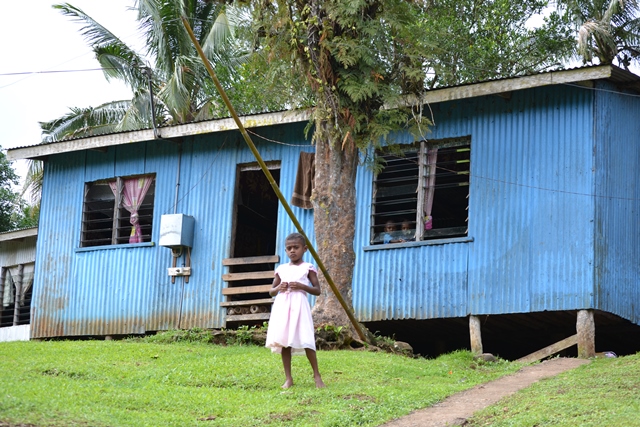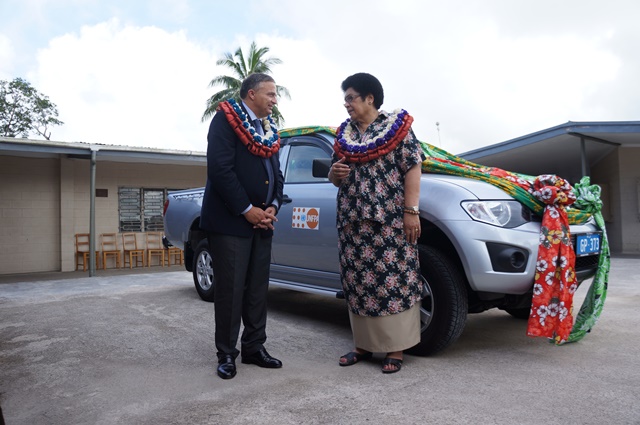IF there is one word which consistently punctuates discourse involving the programming and activities of the United Nations Population Fund (UNFPA), it would have to be access.

In fact the organisation could already be perceived as relentless when advocating for access to information and services of certain mandate areas, particularly when it comes to issues relating to sexual and reproductive health and reproductive rights.
The mandate areas UN member states have entrusted to the UNFPA involve some of the most sensitive issues humanity is grappling with, and they are also for a large part usually matters of life and death.
There are 70,000 adolescent deaths annually from pregnancy and childbirth complications and one of the underlying causes is the lack of access to education and reproductive health services.
The State of World Population 2013 report entitled Motherhood in Childhood: Facing the Challenges of Adolescent Pregnancy (SWOP2013) also lists national policies restricting access to contraception and age-appropriate sexuality education as one of the underlying causes of how on a daily basis, 20,000 girls below the age of 18 years give birth in developing countries.
An estimated 95 per cent of the world's births to adolescents occurred in developing countries. When you consider that the Pacific is home to some of the world's highest adolescent fertility rates (the number of births per 1000 women aged 15-19 years), this is a red flag to the issue of access.
Access to information and services to contraceptive for example, to help an individual or a couple plan the number of children they want according to their resources, and the frequency with which to have them, preserves women's health and infants borne by healthy women already have an advantage.
When every child begins life in good health, because of good maternal and sexual and reproductive health services mothers were able to access and utilise, the benefits to the nation as a whole is absolute. This is why UNFPA insists reproductive health is at the very heart of development.
It is a reality though that issues relating to reproductive health remain the leading cause of death and ill-health for women of child-bearing age worldwide. For adolescent mothers, their chances of dying are double that of women who wait until they were in their 20s and/or adolescent mothers' education and employment potential and opportunities are significantly reduced.
The five Pacific island countries with the highest adolescent fertility rate in the Pacific, ranging from 62 to 85 are Marshall Islands, Nauru, Vanuatu, PNG and the Solomon Islands. The adolescent fertility rate of the remaining 10 countries (Kiribati, Cook Islands, Federated State of Micronesia, Tuvalu, Tokelau, Samoa, Fiji, Tonga, Palau and Niue) range from 47 to 17; it is 12 in Australia and 6 in France.

UNFPA also advocates for and has worked with 10 Pacific countries so far to incorporate comprehensive sexuality education in school curriculums.
Comprehensive sexuality education includes life skills so that instead of a focus on physical biological changes, sessions now include topics which address self-esteem and self-confidence. Alternative sources may be neither correct nor holistic.
"Many studies show that providing adolescents with information and services on reproductive and sexual health enables them to better resist peer pressure and postpone the onset of sexual activity," Dr Laurent Zessler, UNFPA Pacific director and representative said.
"When these young people finally do decide to engage in sexual activity they are more likely to protect themselves from pregnancy and sexually transmitted infections, including HIV." In May 2006, UNAIDS released findings attributing delayed sexual debut and increase condom use to education.
Guided by the International Conference on Population and Development (ICPD) which was signed by 179 countries in 1994 and other international instruments, the UNFPA approaches reproductive and sexual health from a rights-based perspective.
The right to reproductive and sexual health and services belong to all people that could be realised fully with equality and equity. Everyone must have the freedom from sexual violence and coercion and being able to access information and services which contribute to voluntarily choices in marriage, family formation and determination of the number, timing and spacing of children is an essential first step.
The lack of access to sexual and reproductive health and rights information and services can lead to unwanted pregnancies which in some countries, socioeconomic and cultural realities in turn pushes adolescent girls and women towards unsafe abortions.
There are 3.2 million unsafe abortions among adolescents each year and 8 per cent of maternal deaths worldwide are because of unsafe abortion. UNFPA does not support or promote abortion as a method of family planning but rather accords the highest priority and support for voluntary family planning to prevent unwanted pregnancies (thus eliminating recourse to abortion).
The legal status of abortion is the sovereign preserve of countries. UNFPA will however support governments to strengthen their national health systems to deal effectively with complications of unsafe abortions, thereby saving women's lives. Where abortions are legal, national health systems should make it safe and accessible, as agreed by UN member states.
The adage prevention is better than cure comes to mind. With access to correct and timely sexual and reproductive health and services, we can save lives and build-up a healthy people to ably and effectively drive national sustainable progress.


